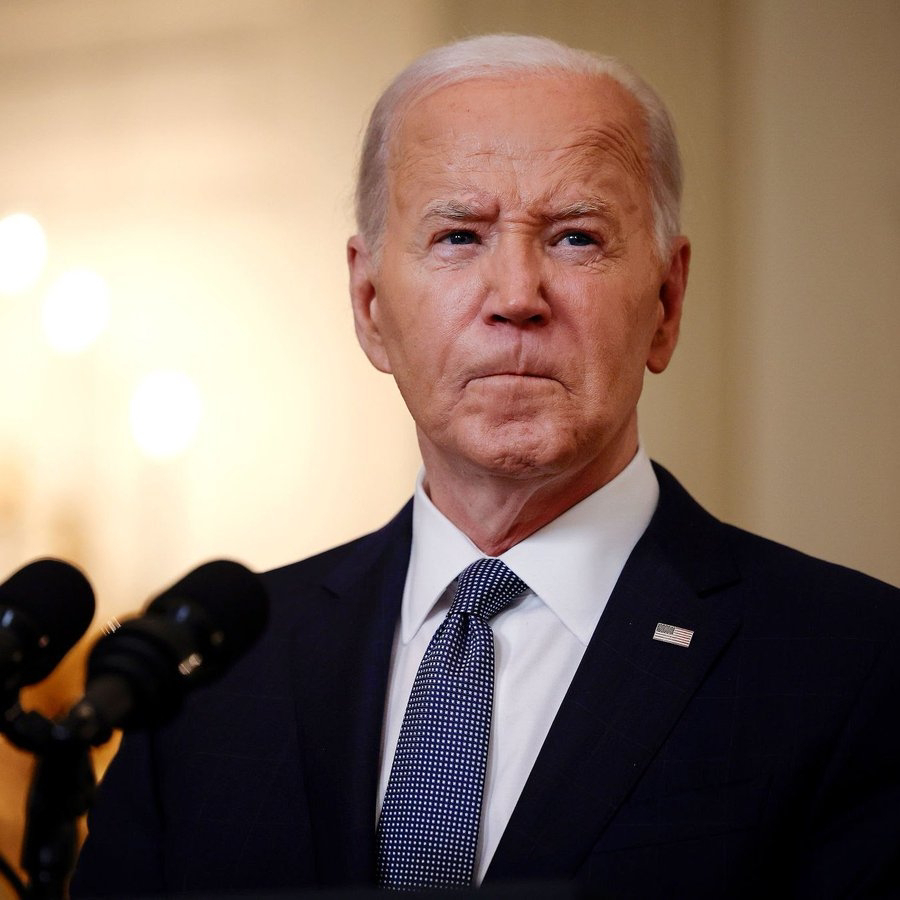America will very likely fight a 3-front war against Russia, China, and Iran, said Palantir’s CEO Alex Karp.
joe Biden
America will very likely fight a 3-front war against Russia, China, and Iran, said Palantir’s CEO Alex Karp.
Alex Karp, CEO of Palantir Technologies, has indeed made statements suggesting the possibility of major geopolitical conflicts involving the U.S., Russia, China, and Iran. While these statements can generate significant discussion, it's essential to consider them as part of broader strategic analyses and not as definitive predictions. Geopolitical dynamics are complex and subject to change based on numerous factors, including diplomatic efforts, economic conditions, and military strategies.
The possibility of a war between the U.S. and Iran involves several considerations:
1. **Regional Conflicts**: The U.S. and Iran have clashed over various issues in the Middle East, including Iran's nuclear program, its support for militant groups, and its influence in countries like Iraq and Syria. These tensions occasionally flare up, but direct conflict remains limited so far.
2. **Diplomatic Efforts**: Despite tensions, there have been numerous diplomatic efforts to manage and mitigate potential conflicts, such as the Joint Comprehensive Plan of Action (JCPOA) on Iran's nuclear program. The success of diplomacy plays a key role in preventing direct military confrontation.
3. **Military Capabilities**: Both nations have significant military capabilities. The U.S. has a strong military presence in the region, while Iran has considerable regional influence and a robust military and paramilitary network.
4. **Proxy Warfare**: Much of the conflict between the U.S. and Iran has been through proxy warfare, with Iran supporting various militias and groups in the region. This indirect approach helps avoid direct military confrontation while still pursuing strategic goals.
5. **Economic Sanctions and Pressure**: The U.S. has used economic sanctions and other forms of pressure as tools to counteract Iran's regional influence and nuclear ambitions, which impacts the likelihood of direct conflict.
Overall, while there are significant tensions and risks, direct war between the U.S. and Iran remains a possibility but not an inevitability. Much depends on diplomatic developments, regional dynamics, and decisions made by leaders on both sides.
The possibility of a direct war between the U.S. and Russia is a topic of significant concern and debate among analysts and policymakers. Several factors influence this possibility:
1. **Geopolitical Tensions**: The U.S. and Russia have conflicting interests in various regions, such as Eastern Europe and the Middle East. These tensions have been exacerbated by events like Russia's annexation of Crimea and its military involvement in Ukraine.
2. **Military Posturing**: Both nations maintain strong military capabilities and engage in various forms of posturing, including military exercises and strategic deployments. This can increase the risk of misunderstandings or accidental conflicts.
3. **Diplomatic Efforts**: Both countries have channels for diplomatic communication aimed at managing and mitigating tensions. Engagement in negotiations and arms control agreements, such as the New START treaty, plays a critical role in reducing the risk of conflict.
4. **Global Alliances**: The U.S. is a NATO member, and any conflict involving NATO members could lead to broader confrontations. Conversely, Russia has alliances and partnerships that it could leverage in such scenarios.
5. **Cyber and Hybrid Threats**: Both countries engage in cyber operations and hybrid warfare tactics, which can create conflicts without traditional military engagements.
While the risk of direct war exists, most experts believe that both nations will continue to use diplomatic, economic, and proxy strategies to address their differences rather than engage in full-scale direct conflict.
The possibility of a war between the U.S. and China involves several factors:
1. **Geopolitical Competition**: The U.S. and China are major global powers with competing interests, particularly in the Indo-Pacific region. Tensions over issues like Taiwan, the South China Sea, and trade disputes contribute to the risk of conflict.
2. **Taiwan**: Taiwan is a significant flashpoint. The U.S. has a policy of strategic ambiguity regarding Taiwan, supporting its defense but not explicitly guaranteeing intervention in the event of a Chinese attack. China's stance on Taiwan remains assertive, and any military moves could escalate tensions.
3. **Military Modernization**: Both nations are modernizing their military forces. The U.S. maintains a strong presence in the Indo-Pacific region, while China is expanding its military capabilities, including naval power and missile systems.
4. **Economic Interdependence**: Despite strategic rivalry, the U.S. and China have deep economic ties. Both economies are interdependent, and a direct military conflict could have severe economic repercussions for both sides, which acts as a deterrent.
5. **Diplomatic Channels**: Both countries engage in diplomatic efforts to manage and reduce tensions. Dialogue, negotiations, and conflict management strategies are crucial in preventing escalation.
6. **Regional Allies and Partnerships**: The U.S. has alliances in the region, such as with Japan, South Korea, and Australia, which could influence the dynamics of a potential conflict. China's regional relationships and partnerships also play a role.
While tensions and competition between the U.S. and China are high, both nations have strong incentives to avoid direct conflict due to the potential for massive economic and human costs. Diplomacy, strategic management, and international engagement are essential in mitigating the risk of war.
Please support me







Comments